sun
Latest
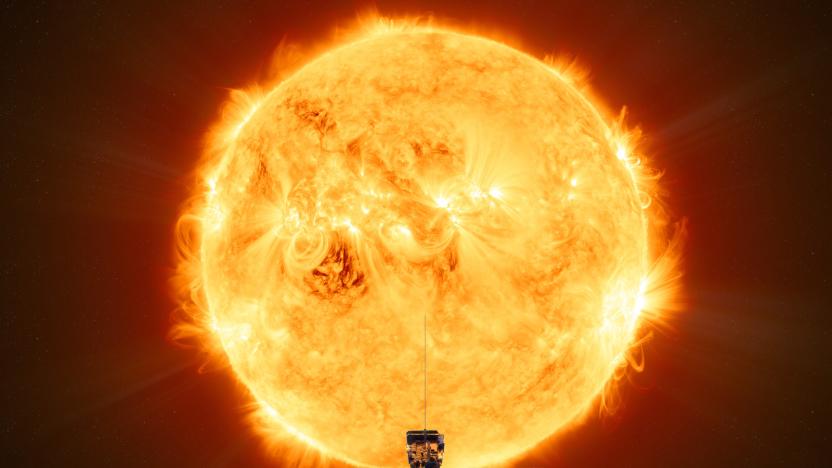
The Solar Orbiter spacecraft may have discovered what powers solar winds
In a paper published in Science, a team of researchers described observing large numbers of jets coming out of a dark region of the sun called a "coronal hole" in the images taken by the Solar Orbiter.
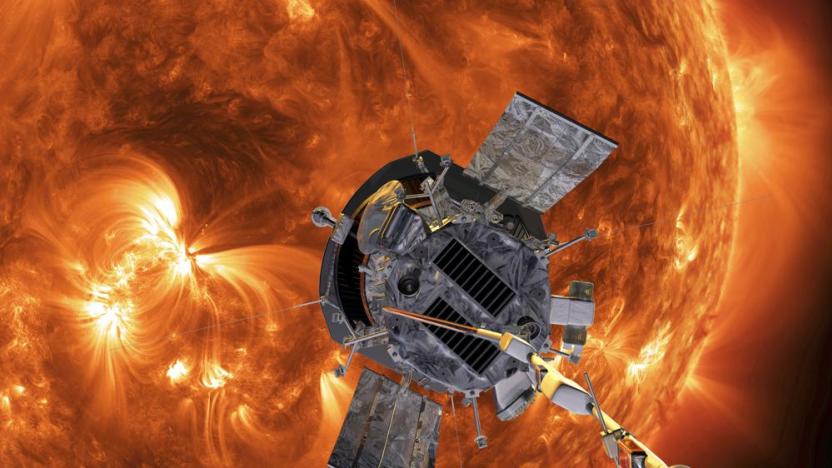
NASA spacecraft enters the Sun's corona for the first time
The Parker Solar Probe has become the first spacecraft to fly through the Sun's upper atmosphere or corona.
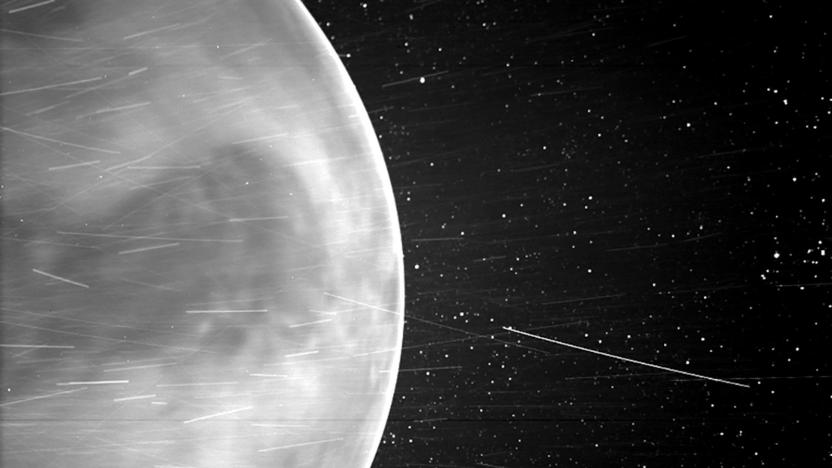
NASA's Parker Solar Probe detected natural radio emissions from Venus
NASA's Parker Solar Probe detected natural radio emissions from Venus, offering new insights into the planet's atmosphere.
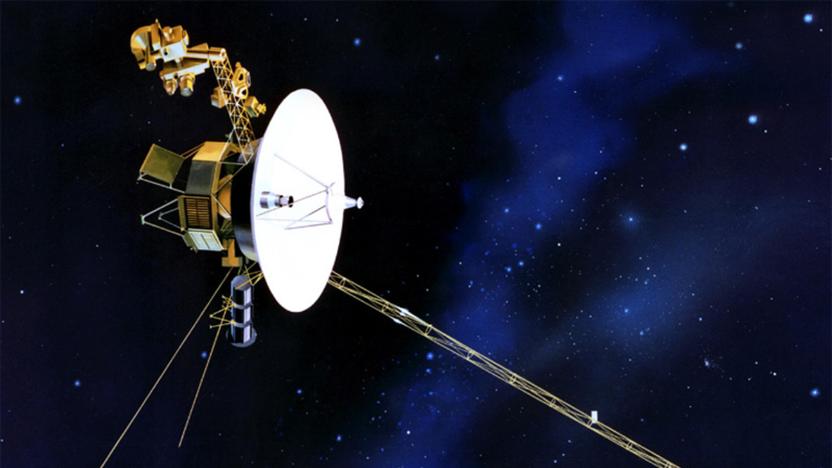
Voyager probes detect a new form of cosmic ray burst from the Sun
The Voyager 1 and 2 probes have detected a new kind of cosmic ray electron burst emanating from the Sun, decades after they started their missions.

Scientists find neutrinos from star fusion for the first time
Scientists have detected neutrinos traced to star fusion for the first time, confirming physics theories dating back to the 1930s.
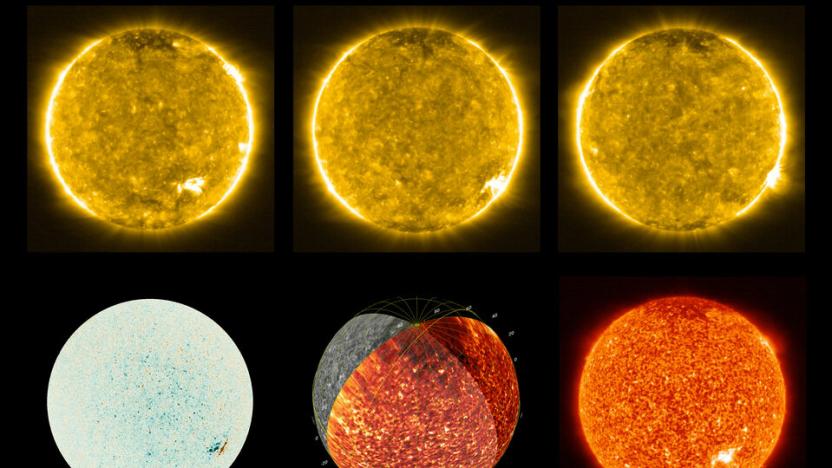
NASA and ESA share the closest images ever taken of the Sun
NASA and ESA share the first images taken by their Solar Orbiter. They're the closest pictures ever taken of the sun.

There could be as many as six billion Earth-like planets in our galaxy
The findings could have a big impact on future space missions.

Samsung backs an artificial smart window that mimics natural sunlight
Samsung has backed a startup that makes realistically-lit fake windows.
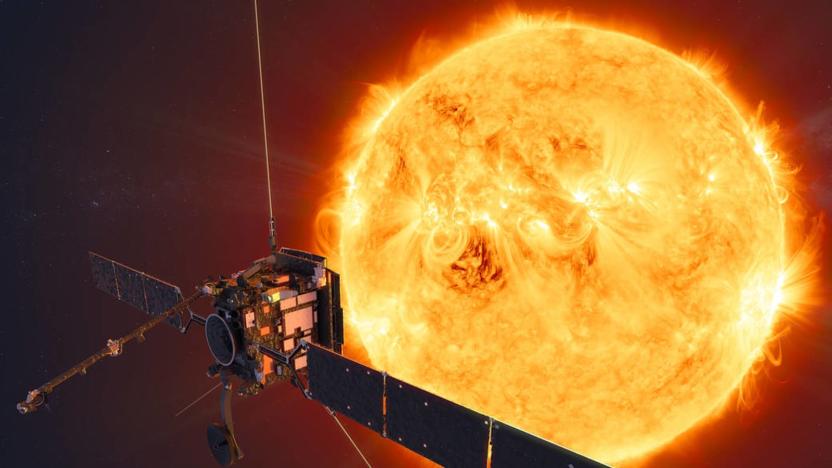
ESA-NASA's Solar Orbiter is on its way to observe the Sun's poles
NASA and the European Space Agency (ESA) have successfully launched the Solar Orbiter on the first-ever mission to study the Sun's poles. It launched aboard United Alliance's highly reliable Atlas V rocket at 11:03 PM ET on February 9th, and at 12:24 AM, scientists received confirmation that the solar panels had unfurled. In about two years, the orbiter will make its first close pass to the Sun and begin observations that could transform solar science and potentially make manned moon missions safer. According to ESA Solar Orbiter project manager César García Marirrodriga, "we have established new high-temperature technologies and completed the challenge of building a spacecraft that is ready to face the Sun and study it up close."
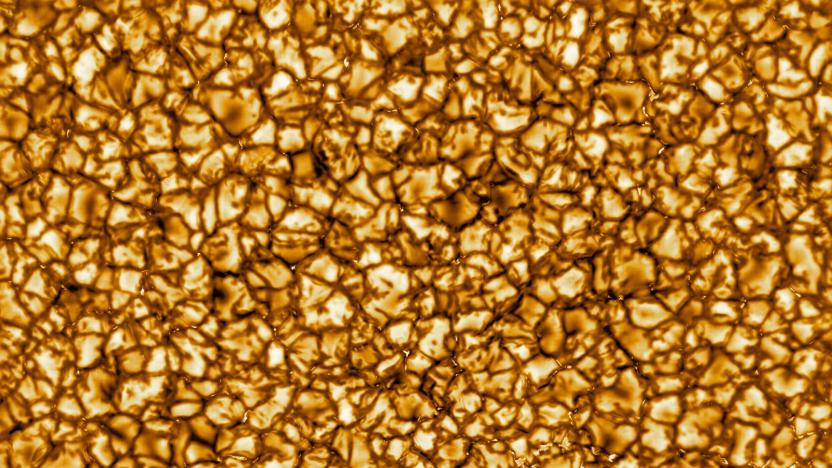
Capturing the Sun's Texas-sized cells in the highest detail ever
The Daniel K. Inouye Solar Telescope (DKIST) started with some controversy, but its first images are already changing the field of solar science. The Maui observatory captured the highest-resolution photos of the sun ever taken, revealing detail down to a mere 18 miles in size. The image above shows turbulent kernel-like cells made up of boiling gases influenced by the Sun's strong magnetic field, each one about the size of Texas.

NASA's closest-ever Sun flybys reveal how solar wind works
As promised, NASA has presented the first results from the Parker Solar Probe -- and they're already providing a treasure trove of insights regarding the Sun. Most notably, the solar wind doesn't behave entirely like scientists expected. There are flips in the Sun's magnetic field direction (nicknamed "switchbacks") that manifest in the solar wind inside Mercury's orbit, but not further. Moreover, the sideways movement of the solar wind near the Sun was not only "much stronger" than expected, but straightened out sooner than predicted as well.
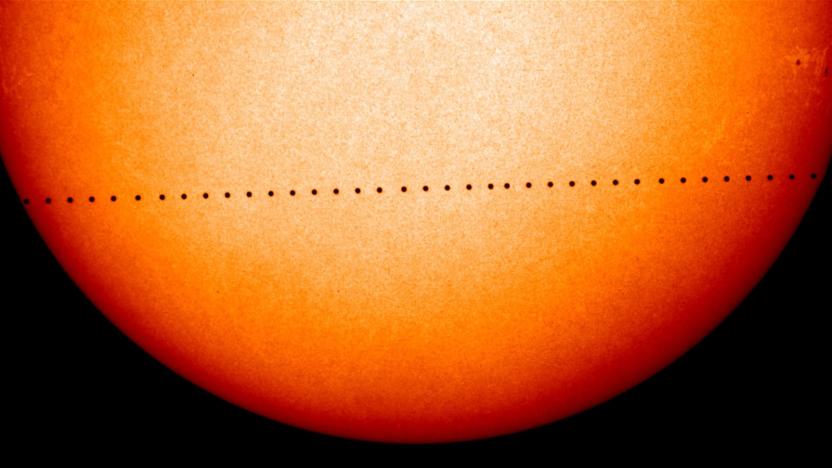
How to safely watch Mercury pass in front of the Sun today
Mercury is about to take a rare trip between the Sun and the Earth, giving viewers around the world a rare and dramatic glimpse of the solar system's innermost planet. The transit will take about five and half hours and start at around 7:35 AM ET, according to NASA. If you've always wanted to see the phenomenon, now's the time, as it won't happen again until 2032 -- and won't be seen again in North and South America until 2049.

Scientists discover ‘Terminator’ tsunamis on the Sun's surface
Our Sun is quite literally a hotbed of activity. Scientists are learning more about our star's solar cycle, in which its magnetic field flips and its north and south poles swap approximately every 11 years. Little is known about what causes this dramatic shift, although it does seem to be related to sunspot activity. A new set of research papers has laid out more about why solar cycles end and how the cycles can trigger a tsunami of hot plasma to cascade through the Sun's interior.
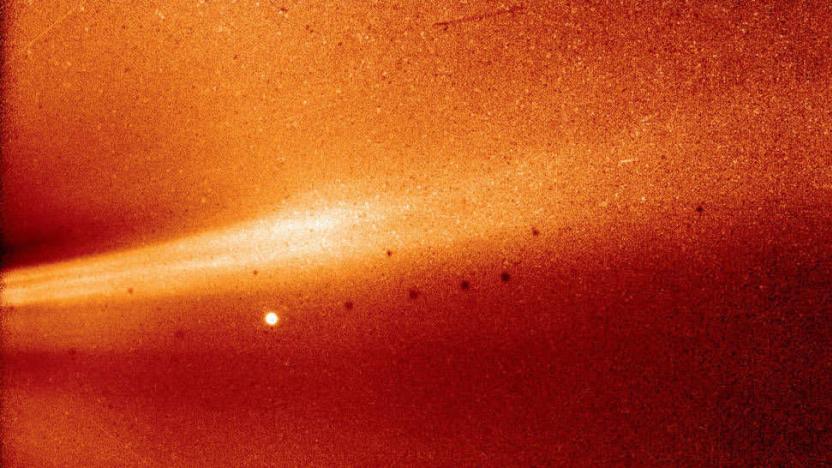
NASA's Parker Solar Probe got closer to the sun than ever before
The mission of NASA's Parker Solar Probe is to help us answer some major questions we have about the sun, and to do that, it's getting closer to the sun, or any star, than a spacecraft has ever been. Between October 31st and November 11th, the probe conducted its first solar encounter, swooping to within 16.9 million miles of the sun's surface and entering its atmosphere, or the corona. And now, we have the first image from that encounter, one that NASA scientists shared at the fall meeting of the American Geophysical Union this week.

L'Oreal's wearable sensor tracks UV, pollen and pollution
L'Oreal isn't a brand you'd usually associate with medical technology, but over the past few years it's been making major inroads in skin protection innovation. There was My UV Patch, designed to inform wearers how their skin was being affected by the sun, and then UV Sense, a thumbnail-sized smart device that helped monitor sun exposure. Now, it's launching a battery-free wearable electronic that tracks your exposure to UV, pollution, pollen and humidity.

It's not always sunny in 'Cyberpunk 2077'
The Gamescom demo for Cyberpunk 2077 is nearly identical to the one shown at E3 two months prior, but it features a few important changes. First, it introduces a new weapon, a katana capable of emitting a magnetic field that deflects bullets, and it highlights the game's character-selection screens. Players will be able to pick their gender, appearance and backstory right from the beginning, filling in details about traumatic events in their past and other personal tidbits.

NASA launches Parker Solar Probe in mission to 'touch' the Sun
After a few delays, the Sun-chasing Parker Solar Probe is on its way. NASA launched the spacecraft aboard a ULA Delta IV Heavy rocket at 3:31AM Eastern this morning (August 12th) and confirmed that the vessel was healthy at 5:33AM. The probe still has a ways to go before it's conducting scientific studies. It'll spend its first week in space deploying its high-gain antenna, the first part of its electric field antennas and its magnetometer. In early September, the probe will start a roughly four-week instrument shakedown to be sure it's ready for science gathering.
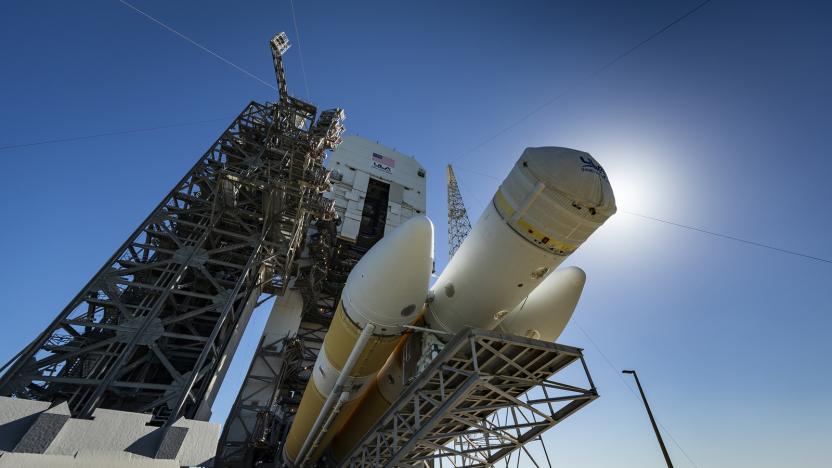
Watch the launch of NASA's Parker Solar Probe Sunday morning (update)
Tomorrow, August 11th, NASA is scheduled to launch a historic mission called the Parker Solar Probe. The spacecraft will launch on a ULA Delta IV Heavy rocket from Launch Complex 37 at Cape Canaveral in Florida at 3:33 AM ET on Saturday morning; the launch window will last for 65 minutes. You can watch it happen on the NASA TV live stream below.
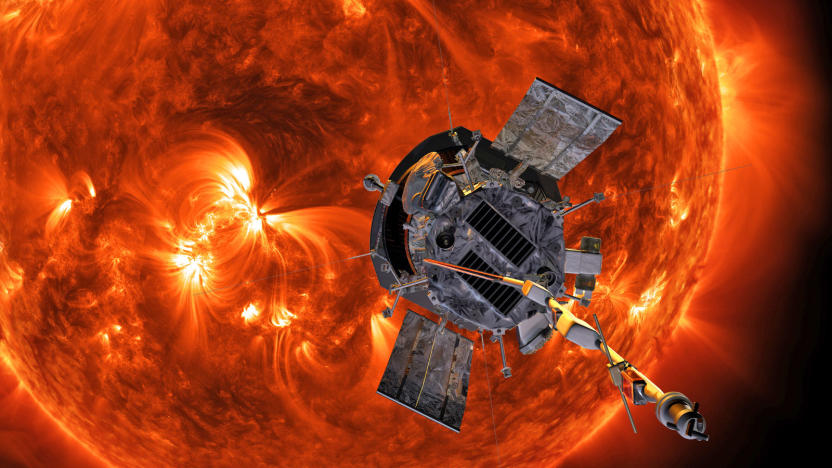
The fastest human-made object launches for the Sun this Saturday
If the weather remains favorable and everything goes according to plan on August 11th, NASA is sending a spacecraft to the sun. The Parker Solar Probe will go closer to the massive ball of gas and plasma keeping our solar system together than any other spacecraft has gone before. It will brave extreme temperatures reaching up to 2,500 degrees Fahrenheit to collect data and images of the sun's atmosphere called "corona." The spacecraft will also reach speeds up to 430,000 mph, making it the fastest-ever human-made object. That's nowhere near fast enough to reach Alpha Centauri within our lifetime -- it has to travel around 7,000 years to reach the star closest to our sun -- but fast enough to get from Philadelphia to DC in a second.
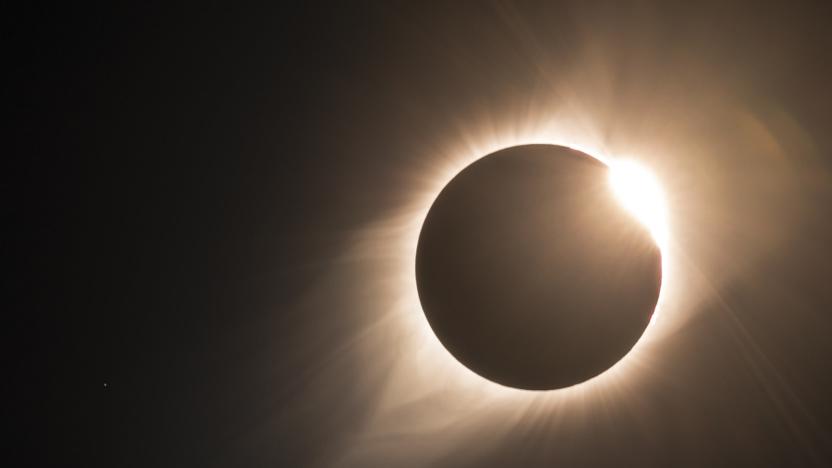
Scientists discover structure within the Sun's atmosphere
While scientists have been learning more and more about our solar system and the way things work, many of our Sun's mechanics still remain a mystery. In advance of the launch of the Parker Solar Probe, which will make contact with the Sun's outer atmosphere, however, scientists are foreshadowing what the spacecraft might see with new discoveries. In a paper published this week in The Astrophysical Journal, scientists detected structures within the Sun's corona, thanks to advanced image processing techniques and algorithms.








